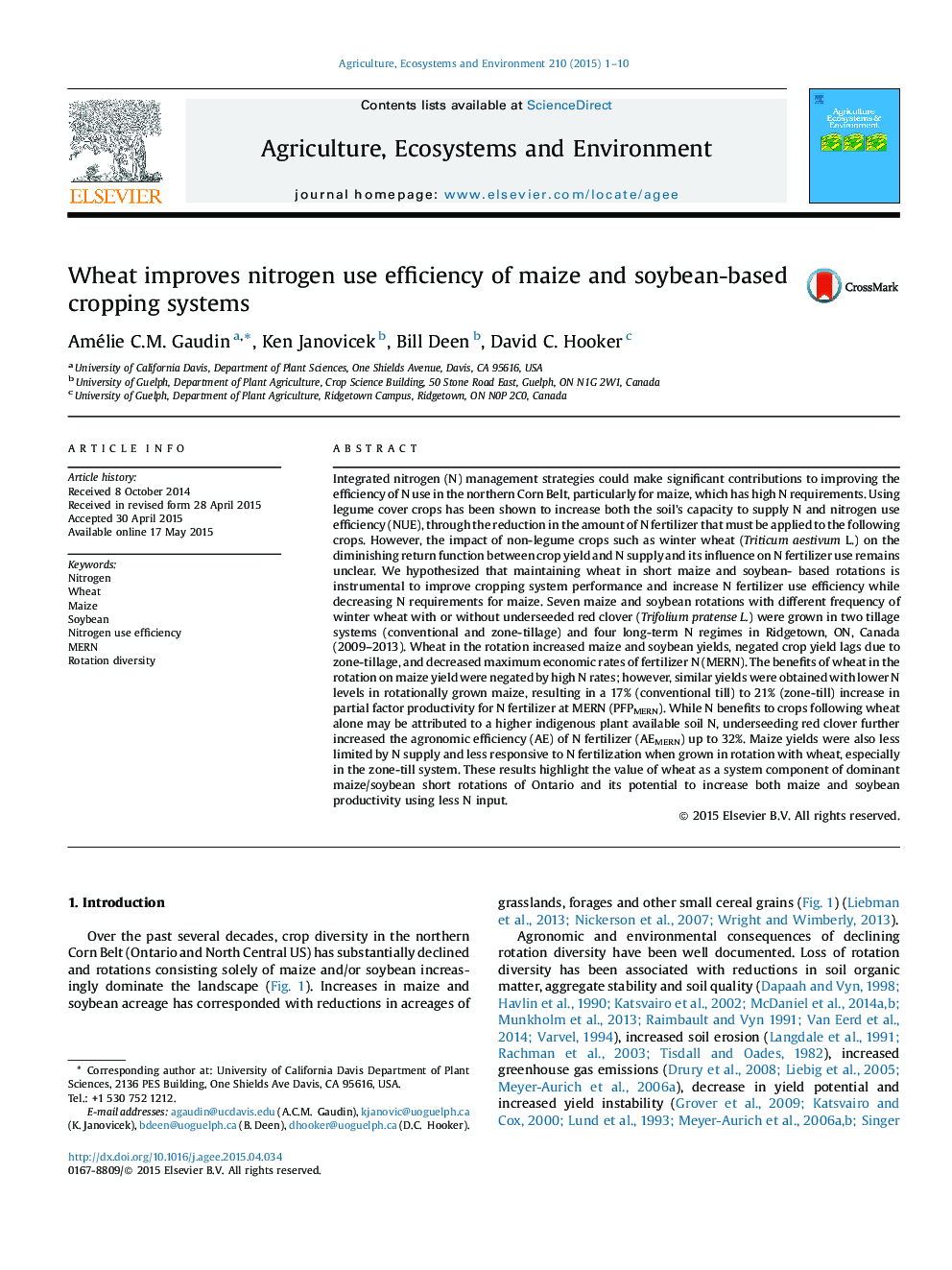| کد مقاله | کد نشریه | سال انتشار | مقاله انگلیسی | نسخه تمام متن |
|---|---|---|---|---|
| 2413701 | 1552042 | 2015 | 10 صفحه PDF | دانلود رایگان |
• Wheat in rotation increases maize and soybean yields and negates lags due to no-till.
• Maintaining wheat in maize–soybean rotations improves N use efficiency.
• Wheat decreases optimal economic N rates by increasing available soil N.
• Underseeded red clover increases the agronomic efficiency of N fertilizer.
• Maize yields are less limited by N fertilizer when grown in rotation with wheat.
Integrated nitrogen (N) management strategies could make significant contributions to improving the efficiency of N use in the northern Corn Belt, particularly for maize, which has high N requirements. Using legume cover crops has been shown to increase both the soil's capacity to supply N and nitrogen use efficiency (NUE), through the reduction in the amount of N fertilizer that must be applied to the following crops. However, the impact of non-legume crops such as winter wheat (Triticum aestivum L.) on the diminishing return function between crop yield and N supply and its influence on N fertilizer use remains unclear. We hypothesized that maintaining wheat in short maize and soybean- based rotations is instrumental to improve cropping system performance and increase N fertilizer use efficiency while decreasing N requirements for maize. Seven maize and soybean rotations with different frequency of winter wheat with or without underseeded red clover (Trifolium pratense L.) were grown in two tillage systems (conventional and zone-tillage) and four long-term N regimes in Ridgetown, ON, Canada (2009–2013). Wheat in the rotation increased maize and soybean yields, negated crop yield lags due to zone-tillage, and decreased maximum economic rates of fertilizer N (MERN). The benefits of wheat in the rotation on maize yield were negated by high N rates; however, similar yields were obtained with lower N levels in rotationally grown maize, resulting in a 17% (conventional till) to 21% (zone-till) increase in partial factor productivity for N fertilizer at MERN (PFPMERN). While N benefits to crops following wheat alone may be attributed to a higher indigenous plant available soil N, underseeding red clover further increased the agronomic efficiency (AE) of N fertilizer (AEMERN) up to 32%. Maize yields were also less limited by N supply and less responsive to N fertilization when grown in rotation with wheat, especially in the zone-till system. These results highlight the value of wheat as a system component of dominant maize/soybean short rotations of Ontario and its potential to increase both maize and soybean productivity using less N input.
Journal: Agriculture, Ecosystems & Environment - Volume 210, 1 December 2015, Pages 1–10
